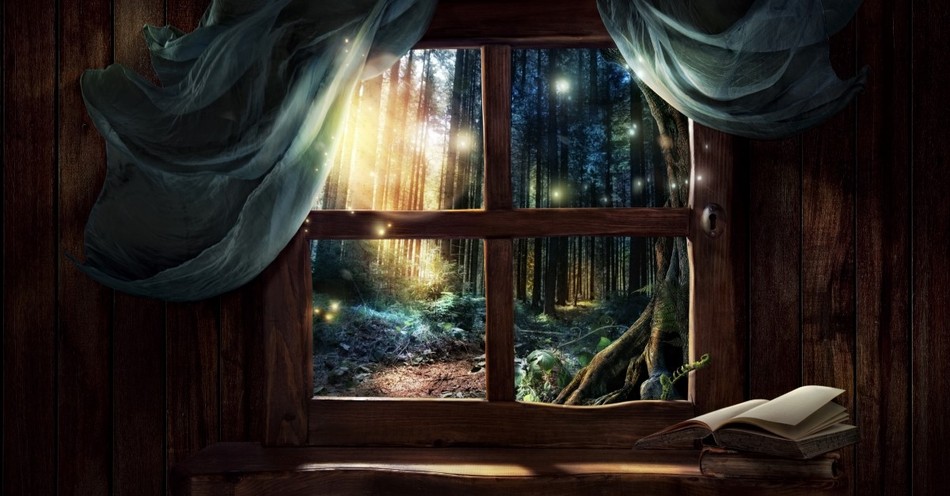Few fantasy authors can say they made history in more than one way. Remarkably, Roger Lancelyn Green (1918-1987) made history in at least two ways: first, he made classic fantasy stories accessible to new generations of readers. Second, he studied under C.S. Lewis and other members of the Inklings at Oxford, becoming lifelong friends with and influences on them.
So, why is much less known about Green’s life? While there are dozens of books about Lewis’s life, there isn’t one biography on Green. Let’s explore what Green wrote, who he was friends with, and see what the search teaches us about his life and legacy.
What Happened in Roger Lancelyn Green’s Life?
Green was born on November 2, 1918, at Poulton Hall, an ancestral home in Cheshire, England. His family, the Lancelyn Greens, had lived at Poulton Hall since the twelfth century. Their history in the area goes back at least a century earlier: his ancestor Scirard Lancelyn is recorded as donating land to a local church in 1093.
He came to Merton College, Oxford University, in 1937 to get his B.A. degree. Multiple life-changing events happened during his studies. One was that he met June Burgett, who later became his wife and the mother of his three children. The second was that he met multiple Inklings during his studies.
Harry Lee Poe reports he met C.S. Lewis in 1938 when Green attended one of Lewis’s lectures, and Green loaned Lewis his watch. Lewis became his tutor, and they remained friends for the rest of Lewis’s life. While studying, Green also performed in plays with the Oxford University Dramatic Society, supervised by Neville Coghill. Coghill had met Lewis while they were both studying at Oxford and was a regular member of the Inklings.
After Green finished his BA in 1940, he met another Inkling while completing his second degree at Merton. J.R.R. Tolkien supervised his thesis on scholar Andrew Lang (famous for studying and collecting fairy tales). The thesis later became Andrew Lang: A Critical Biography, published in 1946. Green later lectured on Lang’s work in 1968 at the University of St. Andrews in Scotland.
After finishing his B.Litt degree in 1944, Green spent several years acting in London stage productions before returning to Poulton Hall in 1947. His father had passed away, and he became “lord of the manor.” Over the years, he hosted several amateur stage productions at his home and had the Inklings as guests on various occasions. He was well-remembered in the community—during the 1960s, he donated a section of his land, Poulton Hey, so that the local Anglican church, St. Andrew’s, could start a sister church, Holy Trinity Church.
Unlike some of his friends, Green never had a full-time academic position. However, he remained involved in academia. He served as Merton’s Deputy College Librarian from 1945 to 1950. From 1950 to 1952, he was the William Noble Research Fellow in English Literature at the University of Liverpool.
He also wrote about many classic authors. He contributed introductions to new editions of works by writers like Jules Verne and George MacDonald. He edited collections such as The Book of Nonsense and A Century of Humorous Verse, 1850-1950. He published several studies of fantasy literature, including Tellers of Tales. His scholarship on individual authors included biographies of Rudyard Kipling and J.M. Barrie, editing a collection of Lewis Carroll’s letters, and editing The Kipling Journal from 1957 to 1979. Chris Calderon argues that Green’s scholarly work explores mythopoeia (a key theme in the Inklings’ work) and is key to understanding the Inklings and the literary culture they lived in.
While Green’s scholarship makes him an important figure, most readers today know him for making classic myths and fairytales accessible to new generations of children. He retold many classic stories across 20 books, including King Arthur and His Knights and The Adventures of Robin Hood.
Green’s full life ended when he passed away in 1987. Green’s legacy lived on in a variety of ways. A year after his death, Jessica Yates, Secretary of the British Tolkien Society, wrote about their correspondence and Green’s reminisces of the Inklings. Many of his books are still in print. His son, Richard Gordon Lancelyn Green, became an acclaimed scholar in Sherlock Holmes studies.
On a more personal level, his influence changed his centuries-old family home. After his death, his wife renovated Poulton Hall’s Walled Garden to include sculptures inspired by Greene’s writings or favorite books—including characters from the stories of King Arthur, Robin Hood, Peter Pan, and Alice in Wonderland. The Garden is open to visitors today.
Was Roger Lancelyn Green an Inkling?
The short answer to this question is, “it depends.” Some resources, like the Encyclopedia of Science Fiction, describe him as an Inkling. A memorial plaque at his home describes him as a “member of the Oxford Inklings.” However, crucial scholars like David Bratman do not include Green in lists of the Inklings. The final answer depends on how we define the group and whether Green was present at “official Inklings meetings.”
The Inklings was started by Lewis and friends at Oxford around 1933 to meet and discuss their writings. Lewis borrowed the name from a defunct writers’ group that Edward Tangye Lean had started at Oxford a few years earlier.
Lewis’s brother, Warren “Warnie” Hamilton Lewis, was an important member of the Inklings. He shared a home with Lewis (or “Jack,” as everyone called him) for decades at Oxford and attended many Inklings meetings. He gives the following account of the group in his introduction to The Letters of C.S. Lewis:
“Properly speaking, it was neither a club nor a literary society, though it partook of the nature of both. There were no rules, officers, agendas or formal elections—unless one counts it as a rule that we met in Jack’s rooms at Magdalen every Thursday evening after dinner.”
During these Thursday evenings, the Inklings experienced many classics in progress, including Tolkien’s Lord of the Rings and Lewis’s Space Trilogy. Members also frequently met on Tuesday (later Monday) mornings for drinks and general discussion at the Eagle and Child (or as some nicknamed it, “The Bird and Baby”). They usually met in a private area called the Rabbit Room (musician Andrew Peterson later borrowed its name when he founded his Christian artists’ community in 2008).
Green joined the Inklings’ Tuesday and Monday meetings (and sometimes stayed overnight with Lewis) on many occasions from the 1940s onward. His letters to Yates mention joining the Inklings for a beer at the Eagle and Child or sometimes at the King’s Arms. His chapter in C.S. Lewis at the Breakfast Table reports many late evenings talking about faith or literature with Lewis—including one evening, May 31, 1951, where “Jack asked if I would like to write his biography, assuming that I survive him.”
Some meetings included Green seeing the Inklings’ work and giving feedback. In 1949, Lewis showed him an early draft of The Lion, The Witch and the Wardrobe. Douglas A. Anderson reports in Tales Before Narnia that Green suggested Lewis call his books The Chronicles of Narnia, playing on the title for Andrew Lang’s book The Chronicles of Pantouflia.
The same year, Green witnessed something surprising: during a meeting with Green, Tolkien admitted he didn’t like The Lion, The Witch and the Wardrobe. Scholars still discuss Green’s records of the meeting today to try and determine just what Tolkien disliked about the Narnia stories.
Green also met the Inklings in other contexts. As mentioned earlier, his friends stayed at Poulton Hall on several occasions. In April 1960, Lewis and his wife, Joy Davidman, joined Green and his wife on a trip to Greece. The trip was Lewis and Davidman’s last before she died in July 1960.
Green also fulfilled Lewis’s wish to write his biography. He wrote a short guide to Lewis’s life, published the year Lewis died. In 1974, he collaborated with Walter Hooper on C.S. Lewis: A Biography, which won the 1975 Mythopoeic Scholarship Award from the Mythopoeic Society. In 1980, Green published an article in Amon Hen about his memories of Tolkien. The same year, he contributed a chapter about his memories of Lewis to the book C.S. Lewis at the Breakfast Table (later expanded as Remembering C.S. Lewis).
He also mentioned the Inklings in several books. He dedicated his 1958 sci-fi study Into Other Worlds to C.S. Lewis. In 1974, he dedicated The Book of Dragons, a collection of great dragon stories from around the world, to J.R.R. Tolkien.
Some have argued that Green appears in the Inklings’ fiction. Tolkien started a time travel novel called The Notion Club Papers in 1945, featuring characters modeled after his friends. Anderson claims that Green is the basis for one character, Wilfred Trewin Jeremy. Bruce G. Charlton takes another view: Jeremy may be modeled on Tolkien’s son, Christopher (the youngest and last member of the Inklings).
So, if being an Inklings means sharing the Inklings’ religious beliefs, being friends with Lewis and other Inklings, and hearing and influencing Inklings’ work, Green fits the bill.
However, most Inklings scholars haven’t listed him as part of the Inklings.
Partly, this is because Humphrey Carpenter’s book The Inklings was the first to discuss the group, and he doesn’t list Green as an Inkling. Carpenter sees Green as a friend who intersected with but never quite entered the Inklings’ circle. Plenty of scholars have critiqued Carpenter’s work—for example, Holly Ordway provides some strong critiques of his Tolkien biography. However, the first scholar tends to define the conversation.
The larger reason goes back to what Warnie Lewis mentioned: the only rule that seemed to define the Inklings was that they came to the Thursday evening writing critique sessions. Even Hugo Dyson, an Inkling who rarely published work and didn’t care for these sessions, appeared at several of them. There don’t appear to be many (if any) records of Green attending the Thursday evening meetings. He appeared at many other events where the Inklings got together, but scholars generally treat those events as secondary. The Mythopoeic Society describes the Eagle and Child meetings as “an overlapping group.”
So, by the criteria that one Inkling set down and which scholars have typically used, Green comes close but misses being a canonized Inkling.
However, it’s worth remembering that Warnie Lewis’s comment says the Inklings weren’t very formal. Lewis doesn’t appear to have cared much about using the Thursday evenings as an important marker: in a 1936 letter to Charles Williams, Lewis said, “the qualifications (as they have informally evolved) are a tendency to write, and Christianity.” So, it’s technically correct to say Green wasn’t an Inkling, but not worth stressing the point outside academic discussions.
The fact Green doesn’t quite fit the final criteria doesn’t mean he wasn’t important to the Inklings’ lives. Like many people who interacted with them but didn’t fit into the Thursday evening group—like Dorothy L. Sayers, T.S. Eliot, or Alice Mary Hadfield—he knew Inklings, shared their faith, and influenced their lives.
What Did Roger Lancelyn Green Write?
As mentioned earlier, he became best-known for books retelling classic stories. His most famous retellings are:
- Tales of Ancient Egypt
- King Arthur and His Knights
- The Adventures of Robin Hood
- Tales of the Greek Heroes
- The Tale of Troy
- Myths of the Norsemen
Many of these books are still in print and available worldwide. The Merton Postmaster notes they have been translated “into languages as diverse as Hungarian and Japanese.”
Sometimes, Green created original stories that combined various classic stories—like The Luck of Troy, which takes details from many legends and adds some original characters as Green tells the story of The Trojan War. Other times, he went even further—taking a classic story and adding new elements. Calderon discusses how Green’s book Mystery at Mycenae retells a classic story of Helen as a detective story: a tale about Helen of Troy being abducted years before the Trojan War leads to Ulysses and Menelaus solving the case of where she has gone. Similarly, The Land Beyond the North imagines a new episode in the Jason and the Golden Fleece story, where Jason and his friends visit Stonehenge.
Green also wrote original work that may surprise some readers.
His first published book of original material, The Singing Rose and Other Poems, appeared in 1947. The next year, his fantasy novella From the World’s End was published. The story also appears in Lin Carter’s book Double Phoenix, which also includes Edmund Cooper’s novella The Firebird.
In 1958, Green published his fairytale The Land of the Lord High Tiger. The story follows Roger and his neighbor Priscilla having adventures in a fairytale land where animals help them defeat an evil wizard. Danielle Hestand notes a few similarities to the Chronicles of Narnia—the fairytale land has “tiger time,” which operates differently than our world’s time. There is a brief reference to a location called North Narnia. However, Lewis observed in a 1958 letter to Times Literary Supplement that he didn’t believe Green borrowed from his work: “The Tiger was an old inhabitant, and his land a familiar haunt, of Mr. Green’s imagination long before I began writing.”
In fact, what readers see as similarities may be intentional: as Calderon notes, the book is really an homage to many fantasy works. Character names are taken from classic books by authors such as Edith Nesbit and Francis Edward Paget. Green’s central idea (the heroes are apparently imagining the whole story, and their animal friends are just their toys) resembles A.A. Milne’s Winnie the Pooh stories.
Green’s stories are well worth exploring—in fact, some of his work is still being explored. In 2005, Joe R. Christopher published two sonnets that Green wrote. In 2008, Douglas A. Anderson published a section from Green’s unreleased novel The Wood that Time Forgot in Tales Before Narnia. Anderson explains that Green wrote the work in 1945 (three to four years before Lewis wrote the first Narnia book) and revised it in 1949 but couldn’t find a publisher. When The Lion, The Witch and the Wardrobe appeared in 1950, Green worried readers would think his book was too similar to Lewis’s work and put the project aside.
Readers or scholars who want to explore just how much Green wrote (and maybe works that haven’t been published yet) can find out more at institutions that have archived his work. His papers are archived at various places, including Wheaton College in Illinois, the University of Minnesota, and the University of St Andrews.
There are various reasons why Roger Lancelyn Green isn’t as well-known as his friends. He influenced the Inklings but may not strictly belong to that circle. The fact he didn’t publish many original fantasy stories may make him seem less exciting than Tolkien or Lewis. However, these factors don’t make him unimportant. He influenced the Inklings in key ways—giving Narnia its name and providing some key details about why the Inklings disagreed about Narnia’s merits. His work retelling classic stories may sound less interesting than writing Lord of the Rings, but retelling is a valuable skill in itself. It was also a skill that paid off: Green made great myths and legends accessible to new generations of readers. Decades after his death, when so many of his friends’ books have gone out of print, he (along with Tolkien, Lewis, and a handful of other associates like Owen Barfield) still has his books being printed and sold in bookstores. Roger Lancelyn Green may be understudied, but he is well worth reading and exploring.
Photo Credit: © Getty Images/mel-nik

This article is part of our People of Christianity catalog that features the stories, meaning, and significance of well-known people from the Bible and history. Here are some of the most popular articles for knowing important figures in Christianity:
How Did the Apostle Paul Die?
Who are the Nicolaitans in Revelation?
Who Was Deborah in the Bible?
Who Was Moses in the Bible?
King Solomon's Story in the Bible
Who Was Lot's Wife in the Bible?
Who Was Jezebel in the Bible?
Who Was the Prodigal Son?


.jpg)

